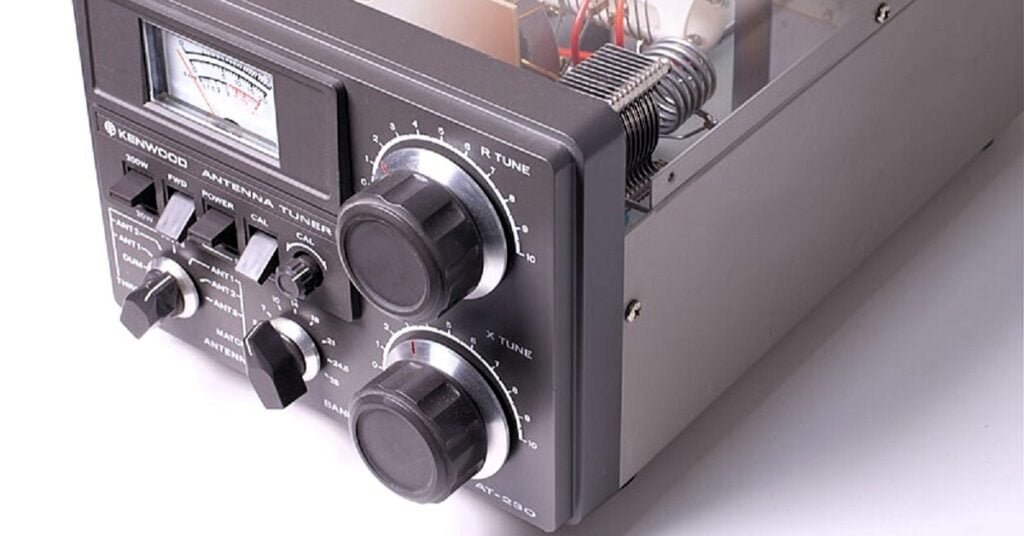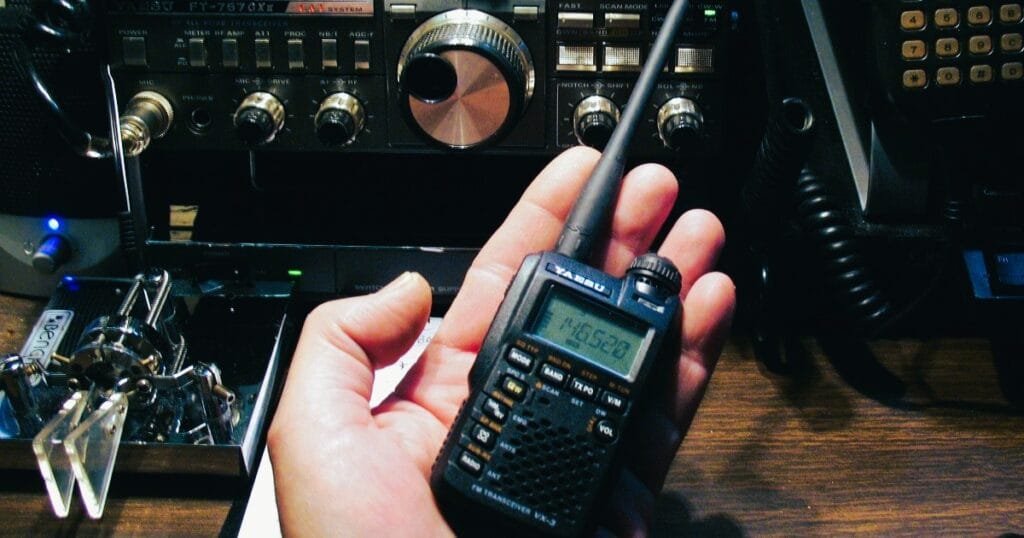Table of Contents
ToggleAntenna Tuners: Your Ham Radio’s Secret Weapon (That You Didn’t Know You Needed)
We are back with TalkieTrail, to make amateur radio sound as good as it is when you listen from your playlist on a Friday evening. In this particular post we will cover one of those sneaky little devices that doesn’t always get the fan fair it deserves; antenna tuners. The term is a misnomer, as they are not just technical toys. They also happen to be the hidden weapon in your arsenal of ham radio equipment that keeps everything running smoothly and communicating clearly every time you step up to use those airways. In this ham radio review of antenna tuners, we will consider why they are required and how they work to save your sanity and along with it the lifespan of a new (or old) little friend on your bench.
What in the World Is an Antenna Tuner?
You might have heard about “antenna couplers” or “matchbox” while you are getting knowledge of ham radio. If yes, you are listening to antenna tuners. Before getting in details first we will learn some basics of antenna tuners. We usually connect the antenna tuner between the two way radio transmitter and the antenna with the help of an additional antenna connector. It maximizes the connection to help in increasing signal strength and efficiency. I won’t get too technical about it, but that means adjusting the impedance so your radio and antenna can work together as one big happy family. Think of it as a middle man—are you following with the negotiation metaphor here. He acts like one to ensure the parties on either side are actually speaking in that specific language.
This causes the impedance mismatch and loss of signal, inefficiency as well it can be harmful to your WearLink. It’s where an antenna tuner comes into play, making certain your line of sight signal broadcasts to the outer world. This ham radio review will outline a few reasons why this seemingly small piece of gear is actually one of the most important things in your kit you didn’t even know you needed.
Why You Absolutely, Definitely Need an Antenna Tuner

Why impedance matching matters, then Now it should be clear why antenna tuner is the number one on your ham radio shopping list.
1. Boost Signal Clarity
The explicit benefit of using an antenna tuner is a boost in signal quality. In the absence of one, your signals may be weak or fuzzy. It’s like attempting to view a movie on an old television with a damaged antenna. An antenna tuner provides the clearest possible transmission of your radio signal by lowering the Standing Wave Ratio (SWR), resulting in little interference to others.
When ham radio review, one of the most important factors to take in consideration is signal clarity. Having a strong setup is nothing if the transmissions sound like they originate from the bottom of a well. Beside that beautiful transceiver of yours sits a little black box armed with an antenna tuner. This will give you the sharpest conversations around, whether it is being heard by your friend down the block from you or in contact with amateur radio operators overseas!
2. Extend Your Communication Range
Another huge perk of using an antenna tuner is that it can greatly expand your reach in communications. It maximizes pairing efficiency between your transmitter and antenna, which means that more of your signal will travel over greater distances. This means when DXing (long distance communication) or trying to reach a distant repeater, the tuner can give you just enough push out of your quieter handling power into a more conducting stage where that valuable signal will make it go through.
Among many other things, this is the most essential part in wireless communication like maintaining the reliable interconnection of devices under influence of range. That you may not realize it if walking around with a band-aid on your mouth. A matching network enables you to punch through those wide horizons, making certain your sign is as loud and with relatively a lot of energy getting out because it may be including pride in spite of everything on your ham radio pastime.
Does an antenna actually provide better range? Click here to know.
3. Protect Your Equipment from Damage
And now — a biggie: an antenna tuner can help protect our expensive equipment. If your radio and antenna are not resonant at the same frequency (you have an impedance mismatch), a fraction of the power that was supposed to be sent out as effective radiated power is reflected back into your radio. This reflected power could over time cause your transmitter to output most of its power as heat, damaging itself. It’s the equivalent of driving with your emergency brake on — bad for both your car and radio.
The antenna tuner acts as a buffer to lower reflected power. Or in layman words, it keeps your radio working fine and prevents burnouts. Equipment preservation is always at the top of any ham radio review, and an antenna tuner is one of your best options to take care after that big investment.
4. Flexibility with Antennas
Amateur radio aficionados are an innovative bunch, and a lot of us like to tinker with different types of antennas. Anything from a wire hand made antenna to transitioning between the vertical and dipole modes, your ability to adapt will only have you armed with an Antenna Tuner. It means that instead of relying on a much harder to achieve perfect antenna for each frequency, the tuner can compensate and use what you have.
That means you can experiment without being forced to deal with impedance mismatches or even worse performance quirks. An antenna tuner is the Swiss Army knife that we all have in our back pocket if you’re an intrepid ham- it adapts for any contingency.
5. Get the Most Out of Your Portable Setup
While it is not necessary if you never take your gear out in the sun, a good portable antenna tuner can be a game changer for hams who like to bring their equipment outdoors. Light, easy to move portable tuners where you are on a hilltop or park, at home? They allow you to deploy temporary antennas without the concerns of exact tuning, ensuring your portable operations are quick and enjoyable.
Portable antenna tuner, which is an essential element when working outdoors as we state in this ham radio review. It’s the perfect assistant for a piece of ham with places to be; you’ll get into revealing mode wherever you are.
Types of Antenna Tuners: Choose Your Weapon
When it comes to antenna tuners, they are not all created equal so let’s take a look at the many flavors of ant tuner we have available and which one could be right for you.
Manual Tuners

With manual tuners, you have the power of adjusting each string with your hands. The dials and settings can be manually adjusted to achieve the perfect fit. This can be a somewhat laborious process, but it suits the do-it-yourself type of individuals. Manual tuners are normally functions of an autotuner at a lower price, which is why it might be the smart choice for many budget-minded hams.
Automatic Tuners

You may not indeed have the patience to do manual tuning, automated tuners can come in handy. These devices will sense errors with impedances and change the settings for you at a push of another button! For hams who just want an easy and efficient system without giving up performance, one of these automatic tuners would be a good selection. They are very useful in competitions or emergencies where the time span is crucial.
Built-In Tuners

Most modern transceivers have pretty effective on-board antenna tuners, but there are cases when external tuners may be needed. Though useful, they often impose restrictions on the ranges of impedances they can match. Integrated Tuner: This is fine for the very casual user. That being said, in more complex installs or difficult antennas an external tuner could offer better performance.
Portable Tuners

Portable tuners are great for ham operators that work outdoors and need something small, lightweight and portable. It is the perfect tuner for field day operation, emergency communications or to have on hand if you need a mobile solution. These tuners are completely autonomous and can be easily stashed in a pocket, removing the need to mess with dials.
How to Use an Antenna Tuner Without Breaking a Sweat
A lot of newbies are scared to death by the idea of using an antenna tuner — but it is nowhere near as hard a weird thing as you may think. Regardless of the type of tuner you have (manual or an automated one), here is a step-by-step to begin.
Step 1: Installation
Now it is time to connect your antenna tuner between the radio and the antenna. All connections on the tuners are labeled inputs and outputs so it is very easy to wire everything up. When using an external tuner, make sure that it is correctly connected to the power supply.
Step 2: Initial Adjustment
If the tuners are investor ones just leave all knobs and settings to their default position. And for automatic, you don’t have to bother. Just turn on the Auto Tuner and it will automatically set everything for you.
Step 3: Tuning
Regular tuning: Begin by transmitting at low power and turning the knobs until your SWR meter depletes. You might need a few tries to get it right in the end, but eventually you will.
Exclusive Control Function: Another example- An auto tuner tuned frequency and optimized the setting (LDO) which is required to adjust while pressing the Tune button. If we are in higher / lower power or there is any issue with Antenna, everything will be adjusted by automatic tuners automatically looking at his breed. It only usually takes a few seconds.
Step 4: Testing
Once you dial in your antenna, send a test transmission to make sure everything is working properly. If your signal comes through loud and clear, without breakup or dropout from monitor to transmission end… you are golden. If not, make some easy and simple changes and try again. After you do, your communication will be smooth and effective.
How To Select the Ideal Antenna Tuner

A Different Approach To Antenna Matching Not all antenna tuners are a one-size-fits-all case. And, all these things we have to manage before starting.
Power Rating: Make sure that your antenna tuner is rated for the power level of your radio. Employing a tuner with too low power rating can damage the tuner or your radio Nearly all tuners will tell you directly on their product page what the max power rating is, so just get a tuner that fits your goals.
Frequency Range: Various tuners are designed to work with different bands of frequencies. The band performance of the tuner should be the most important thing to check before you buy one. It needs to also coincide with our bands of operations. But if you are like me, a jack of all trades operator and love working the HF bands along with some VHF and UHF operation, look for those tuners that can tune over extremely wide frequency ranges.
Tuning Range: No, not all tuners can be impedance matched into any. Restricted tuning range: some tuners can only be tuned for a relatively narrow band of impedances. If you want to use unconventional or homebrew antennas then it would be beneficial for your tuner to have a wider tuning range that suits such setups.
Portability: If that is the type of portable operation you enjoy, consider purchasing a portable tuner. Designed to be highly portable and easy-to-use, these tuners are perfect for outdoor trips.
Price: As with all ham radio gear, antenna tuners come on the market at every price point. Manual Tuners are not as costly as automatic or portables. Decide your budget and choose a lower tier tuner that will provide what you need while keeping money in the bank.
Conclusion: The Unsung Hero of Your Ham Radio Setup
Antenna tuners may not be the most glamorous piece of ham radio equipment, but they are definitely one of the most essential. A tuner makes sure your radio and antenna play nice, delivering cleaner signals to hear at a greater distance while also protecting the expensive toys on either end of that connection. An antenna tuner is great for any operator.
Throughout this ham radio review, we have outlined why antenna tuners serve as such a vital function and what to consider before buying one. As a result, the next time you drag out your rig and begin thinking about the perfect hike for some ham radio fun. And remember that secret weapon of yours: The Antenna Tuner.
Continue to remain connected and informed, as always exploring the airwaves with TalkieTrail!


